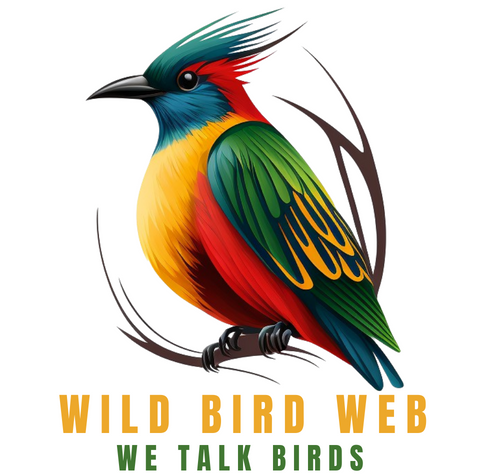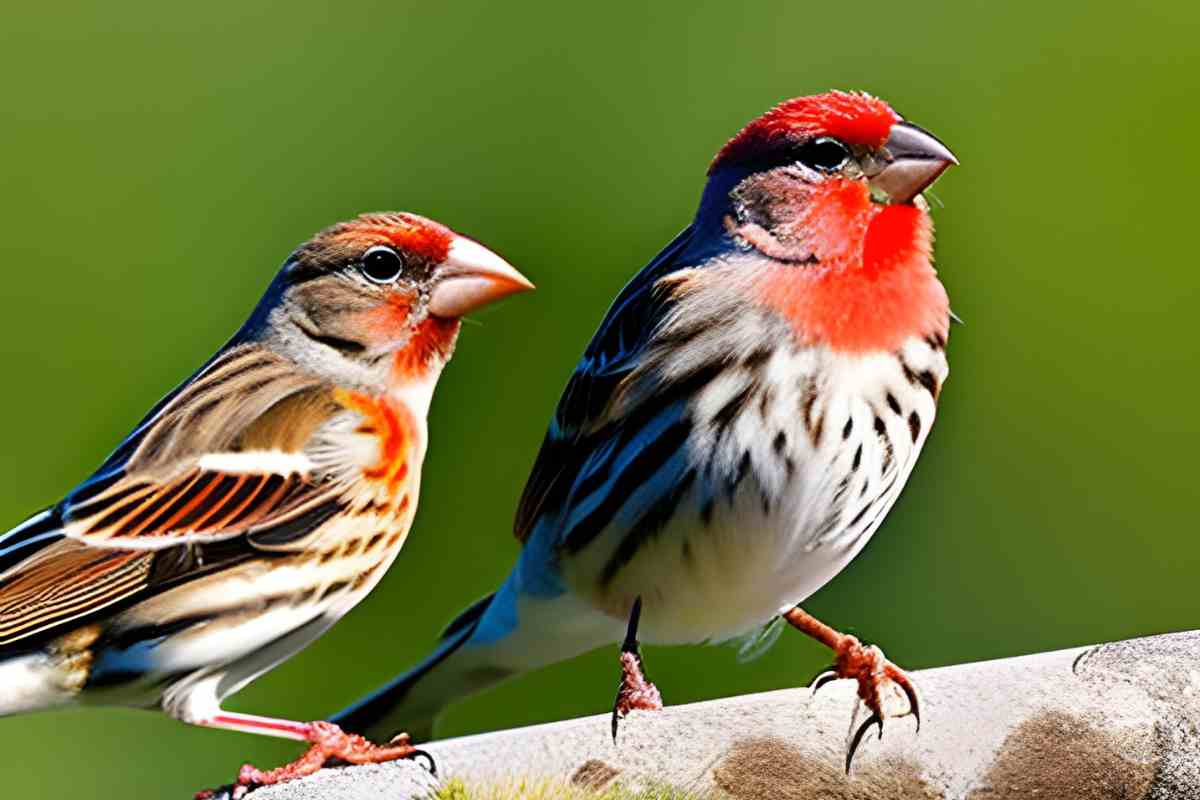Have you ever spotted a colorful bird perched on your backyard feeder, filled with wonder about its origins? Perhaps you’ve noticed the striking red plumage of the house finch and wondered if it’s a native species or an invasive one. We’ve got all the answers in this blog post!
Are House Finches Invasive? Native to North America, House Finches are not considered invasive. However, they have been introduced to other parts of the world, including Hawaii and New Zealand, where they have become invasive.
Keep reading to know more about the topic.
House Finches: Native or Invasive Species?
The House Finch is a beautiful little bird that is native to North America. They are not considered to be an invasive species, but they can become a nuisance if they are not properly managed. House Finches are known to eat a variety of foods, including fruits, nuts, and seeds. They will also drink nectar from flowers. While they typically eat insects as well, they have been known to eat small lizards and rodents.
Also read about: Where Do Finches Nest? An In-Depth Analysis!
How did House Finches Become Established in North America?
The House Finch is a common bird of the western United States and Mexico. It is a member of the same family as the Cassin’s Finch and the Purple Finch, and like them, it is closely related to the European Goldfinch. The house finch was first introduced to North America in 1940, when a few birds escaped from a pet shop in New York City.
Since then, the House Finch has been one of the most successful bird species in North America. It has spread rapidly across the continent, and its numbers have increased greatly. Today, there are an estimated 20 million House Finches in North America!
The key to the success of the House Finch is its ability to adapt to different environments. It can live in cities or open country, and it will eat just about anything. Seeds are its favourite food, but it also eats insects and berries. This adaptability has allowed the House Finch to become established in nearly every state in the continental United States.
What are the Characteristics of House Finches?
The House Finch is a small bird with a reddish body and streaked brown wings. The male has a bright red head and breast, while the female is more brownish. These birds are found in open habitats such as fields, gardens, and yards. They often build their nests in trees or bushes.
House finches are social birds that often travel in flocks. They are seed-eaters and prefer to eat sunflower seeds, millet, and other small seeds. However, they will also eat insects and berries. These birds are known to be messy eaters and often drop food on the ground below their feeders.
House finches are not particularly shy around humans and will often approach people for food. However, they can be aggressive towards other birds at feeders. territorial disputes between house finches are common, especially during the breeding season.
Are House Finches Harmful to the Environment?
No, house finches are not harmful to the environment. In fact, they are actually beneficial to the environment! House finches help to disperses seeds and pollinate flowers. They also provide food for other animals, such as birds of prey.
In some areas, however, house finches can become pests if their numbers become too high. They may compete with other birds for resources such as food and nesting sites. If their population gets too large, they may also spread diseases through the transmission of their parasites.
What are the Benefits of House Finches?
There are many benefits to having house finches around. They are beautiful birds that add color and life to any yard or garden. They are also good for the environment, as they help to control insects and other pests. Additionally, house finches are known to be very friendly birds, and they make great pets.
House finches also eat fruit, seeds, and other food sources that can be found in your garden. This means they help to reduce the need for insecticides or pesticides that may harm the environment. Lastly, house finches are known to be low-maintenance birds and require relatively little care when compared to other pet birds.
House Finches vs. Other Bird Species: Competition and Coexistence
The question of whether or not house finches are invasive is a contentious one. Some people believe that they are, while others believe that they are not. However, there is no doubt that house finches compete with other bird species for food and nesting sites. This competition can sometimes lead to conflict, but it can also lead to cooperation and coexistence.
There are many different bird species in the world, and each has its own unique set of needs. When two different bird species share the same habitat, they must compete for resources. The competition can be for food, nesting sites, or even mates. If one bird species is much better at competing than the other, then the less competitive species may be pushed out of the habitat altogether.
However, competition is not always a bad thing. In some cases, it can actually lead to cooperation and coexistence between two different bird species. For example, if two bird species share the same predator, they may form a mutual protection pact against the predator. Or if two bird species share the same nesting sites, they may cooperate in defending the nesting sites from rivals.
So what does this all mean for house finches? House finches are certainly capable of competing with other bird species. In some cases, this competition may even lead to conflict. However, house finches are also capable of cooperating with other bird species. Ultimately, whether or not house finches are considered invasive will depend on how their presence affects the overall
How to Identify House Finches: Appearance and Behavior
House finches are a small, sparrow-like bird with a brown back and streaked breast. They have a short, notched tail and long wings. Male house finches are reddish in color, while females are duller brown. Juvenile birds are similar to adults but lack the red coloring.
House finches are found in open woodlands, scrublands, and urban areas across North America. They typically build their nests in trees or shrubs, but will also use man-made structures such as eaves and gutters.
These birds are social creatures and often form flocks with other finch species. House finches will also visit bird feeders and drink from nectar sources.
The Role of House Finches in Ecosystems: Positive or Negative?
House finches are small songbirds that are native to North America. They are found in a variety of habitats, including forests, grasslands, and urban areas. House finches are not considered to be invasive species. However, there is some debate about the role of house finches in ecosystems. Some people believe that house finches have a positive impact on ecosystems, while others believe that their impact is negative.
There are a few reasons why some people believe that house finches have a positive impact on ecosystems. First, house finches help to control insect populations. They eat insects, including many that are considered to be pests. This can help to reduce the numbers of harmful insects in an ecosystem. Second, house finch nests can provide homes for other animals. Small mammals and reptiles often use abandoned house finch nests as shelter. Finally, house finches disperse seeds from the fruits they eat. This can help to replenish plant populations in an ecosystem.
However, there are also some reasons why some people believe that the impact of house finches on ecosystems is negative. First, house finches compete with other animals for food and nesting sites. This competition can lead to decreased populations of other animals.
Second, the spread of disease by house finches can be detrimental to ecosystem health. House finches can carry diseases that can infect other animals and plants. Finally, because they eat fruits and seeds, house fininches can contribute to the decline of plant populations
House Finches as Pets: Legality and Care
As far as the legality of keeping house finches as pets goes, there are no federal laws against it. However, some states do have laws prohibiting or regulating the possession of wild birds. So, if you’re considering keeping a house finch as a pet, be sure to check your state’s laws first.
As for care, house finches are relatively easy to take care of. They don’t need a lot of space, and can even be kept in a cage. Just make sure to provide them with plenty of food and water, and some toys or other objects to keep them entertained.
Did I answer everything you need to know about are house finches invasive?
In North America, the house finch is not considered an invasive species. However, their presence does have both positive and negative effects on ecosystems. They can help to control insect populations and disperse seeds, but they also compete with other animals for food and nesting sites. House finches are legal to keep as pets in most states, but be sure to check your state laws before doing so.

